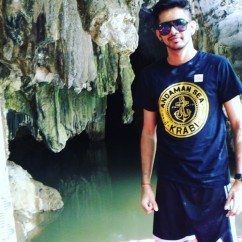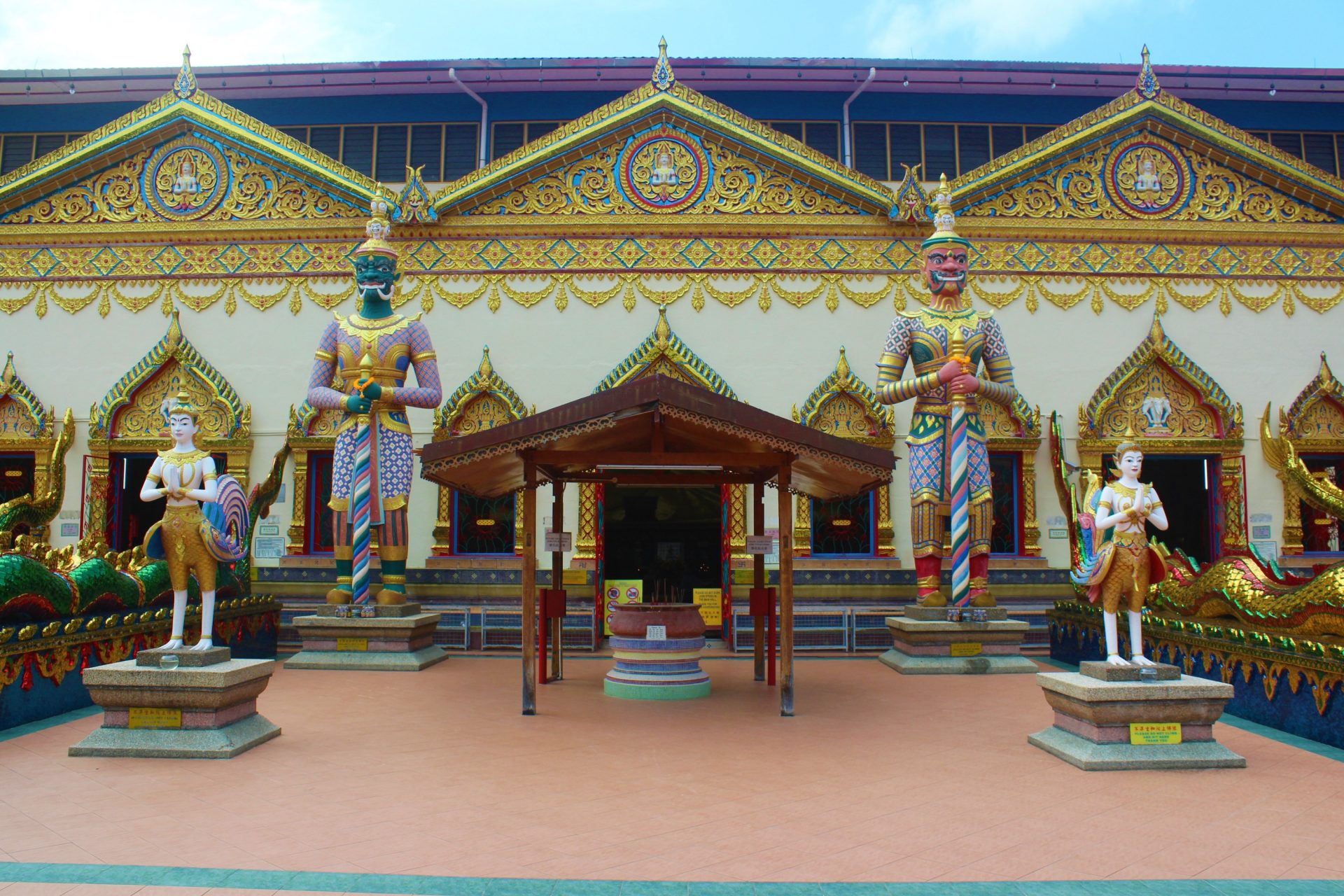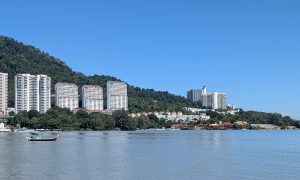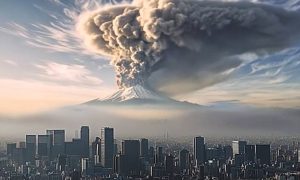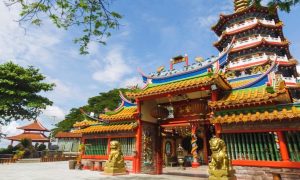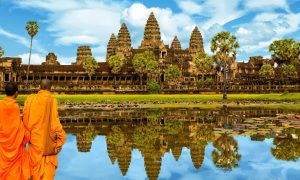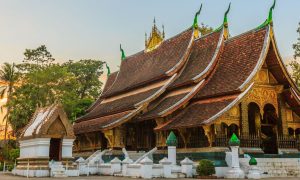Thai Buddhist Wat Chayamangkalaram temple is one of the more famous temples in the Penang for having a very large golden Reclining Buddha.
Most areas in Pulau Tikus offer a blend of old and new, and Buddhist temples are a big part of the reflection. Among the many shrines you will come across, the Thai Buddhist Wat Chayamangkalaram temple is one of the more famous ones in the city for having a very large golden Reclining Buddha. I entered the temple with only that one factoid in mind, but knew I was about to learn a lot more.
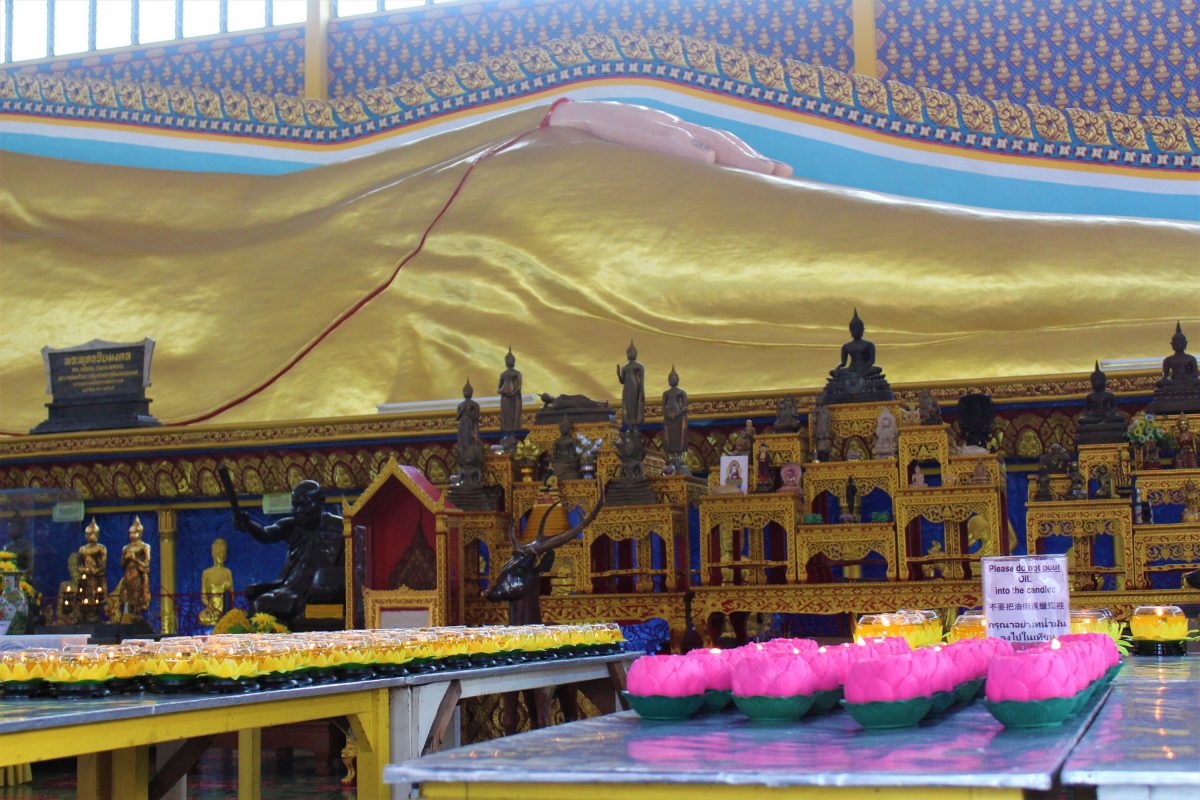
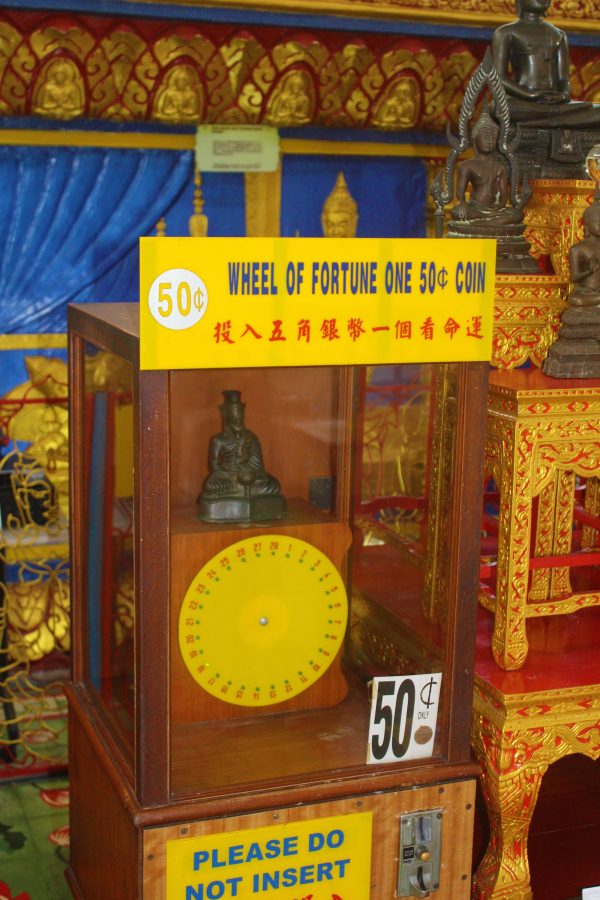
It really felt like stepping into a temple in Thailand as the scent of incense sticks and meditative chants enveloped me. Saffron-clad monks devoid of materialistic etchings were unfazed by the tourists, as was the temple’s dog, relaxed and docile in the presence of his calm masters. Constructed in 1845, the architecture follows and echoes the influences of old Siam, Burma and China – symbolising the multi-ethnic community of Penang.
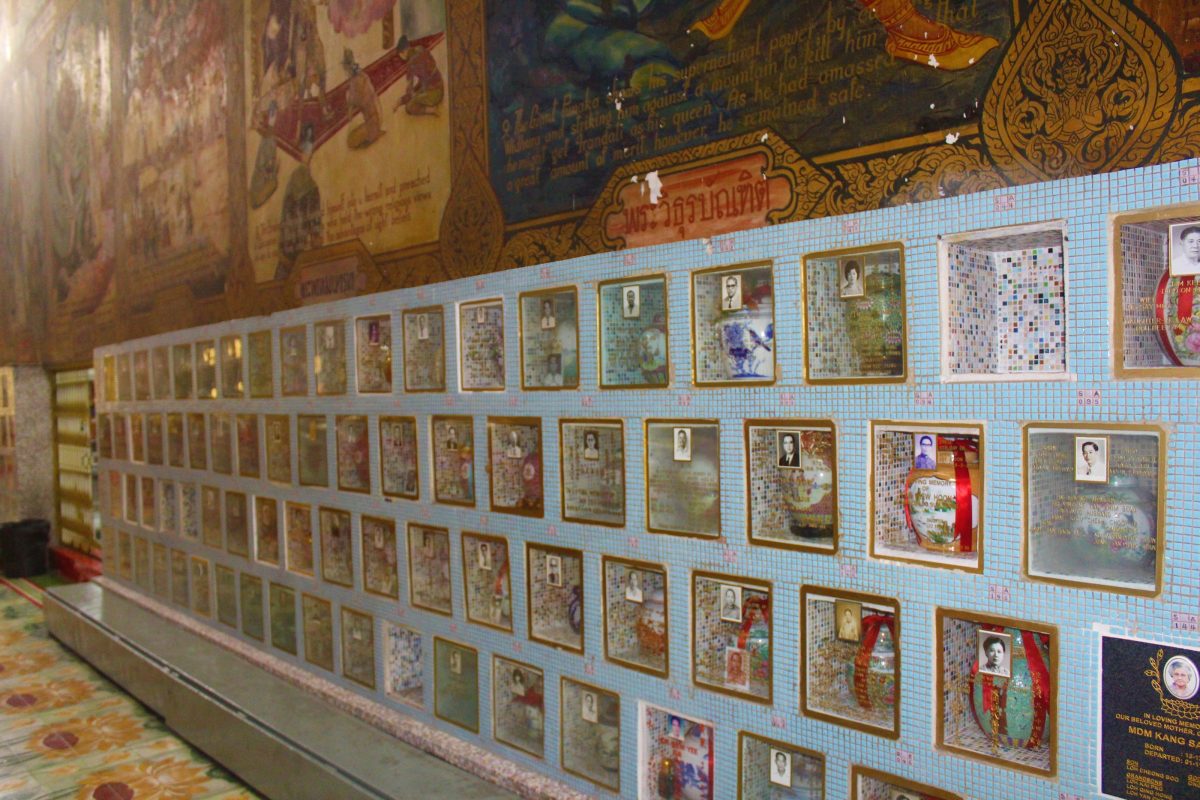
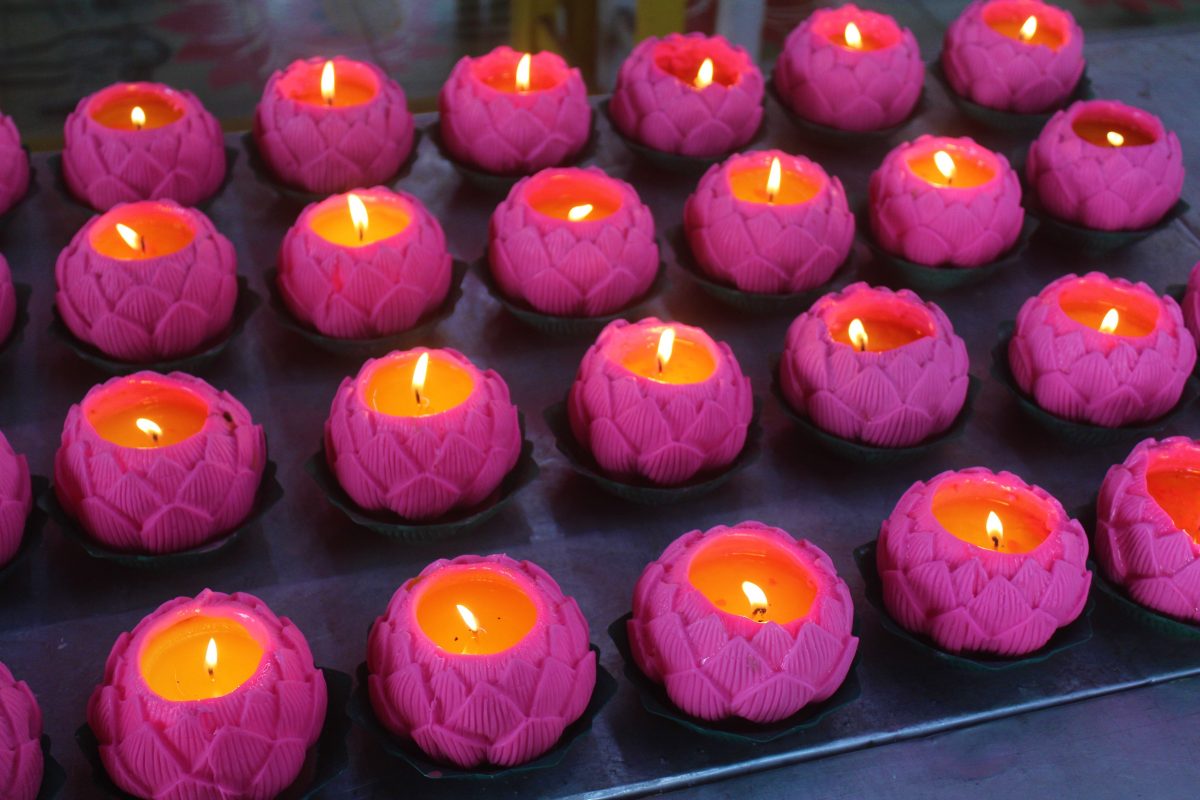
Shades of red, gold, and orange stretch far and wide, and glinting under the sun are two gigantic dragons, guarding the main entrance to the Reclining Buddha. The pair creates an otherworldly appeal with artistic nuances of little glass pieces that cover the bodies while man-like sculptures are less cautious and welcoming, with hands placed together in traditional costumes. The stretch of sculptures builds an atmospheric prefix of meeting a King – and rightly so.
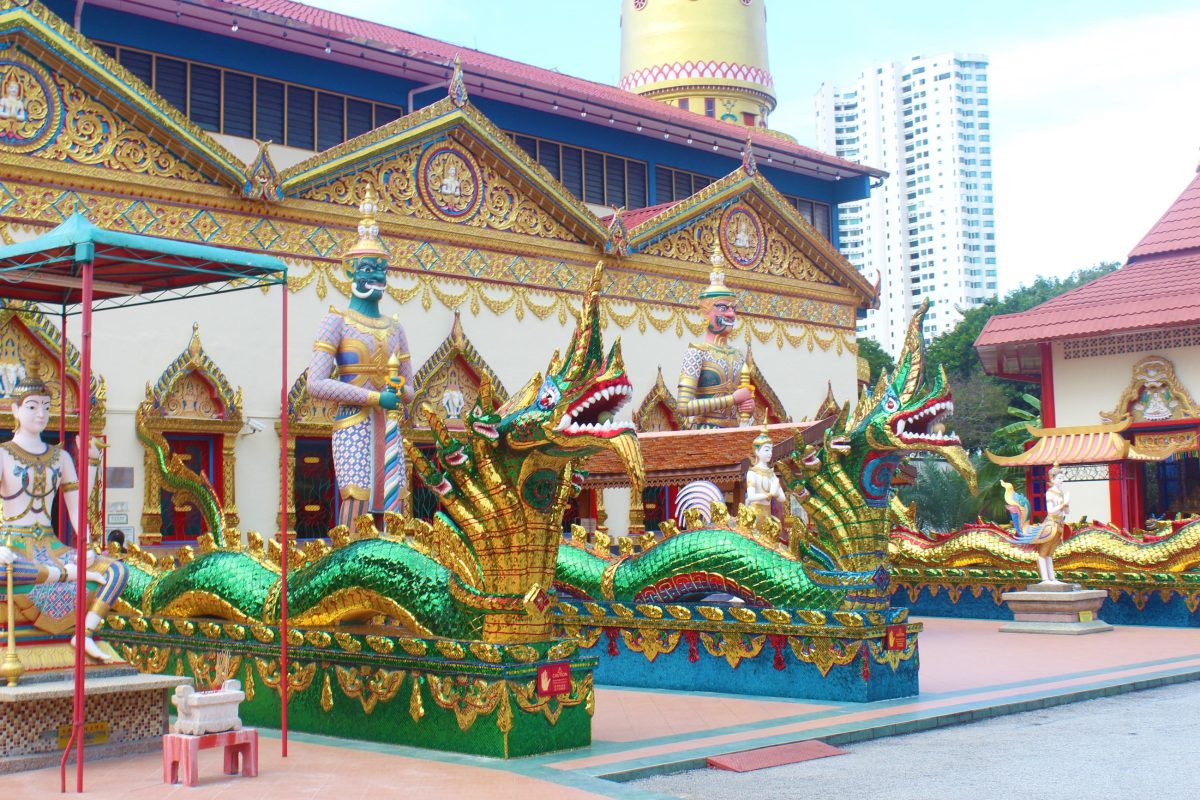
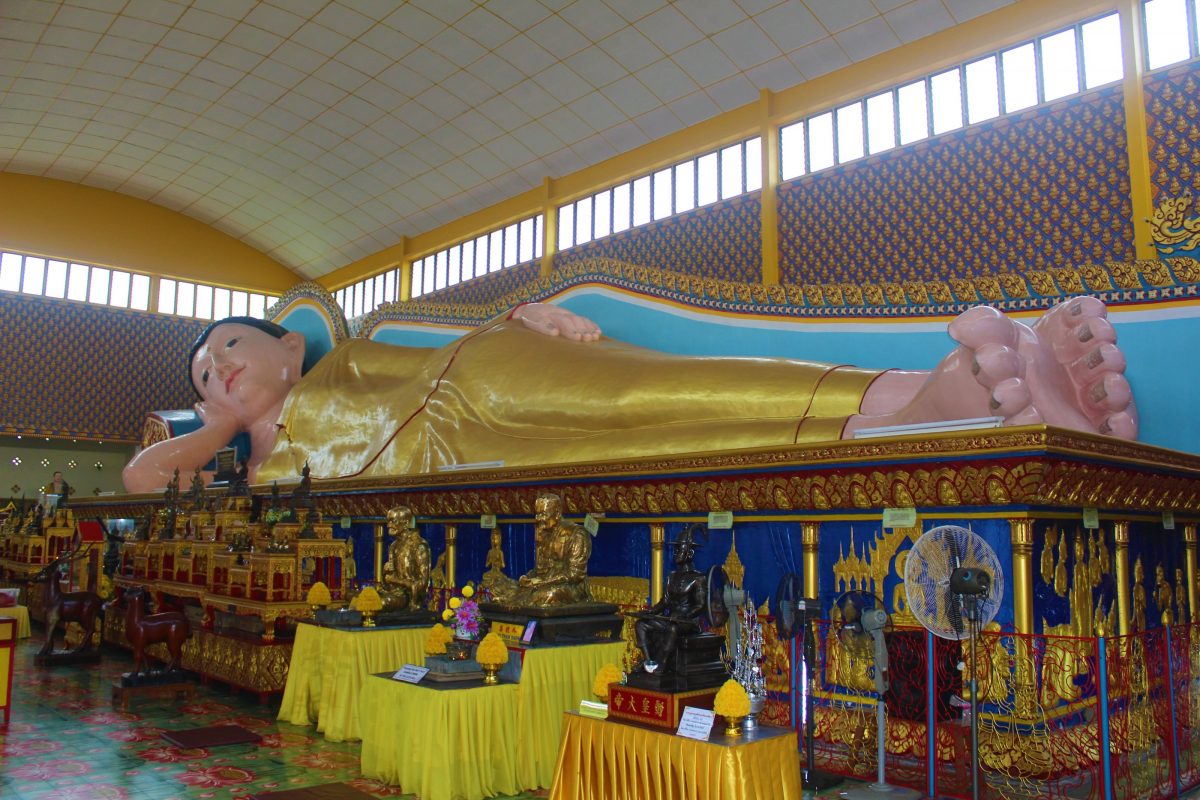
The temple is a welcome treat for photographers. While most tour guides will highlighting the temple’s attractiveness and its significance during the festivals of Songkran and Loi Krathong, the temple holds so much more of a historical and cultural importance, and one should take their time learning about its many treasured secrets.
WHY IS THE BUDDHA RECLINING?
Measuring 33 metres in length, the Reclining Buddha statue is a sight to behold. It is the only resting Buddha in Penang and one of the longest in the world. The construction of the gleaming statue commenced on 24 January 1957 and was sculptured by Mr Iam Amornsathit from Pak Panang of Nakhornsrithammarat, Thailand. The objective was to join the global Buddhist fraternities in commemorating the celebration of the Buddhist 25th Century year in B.E.2500 (1957).
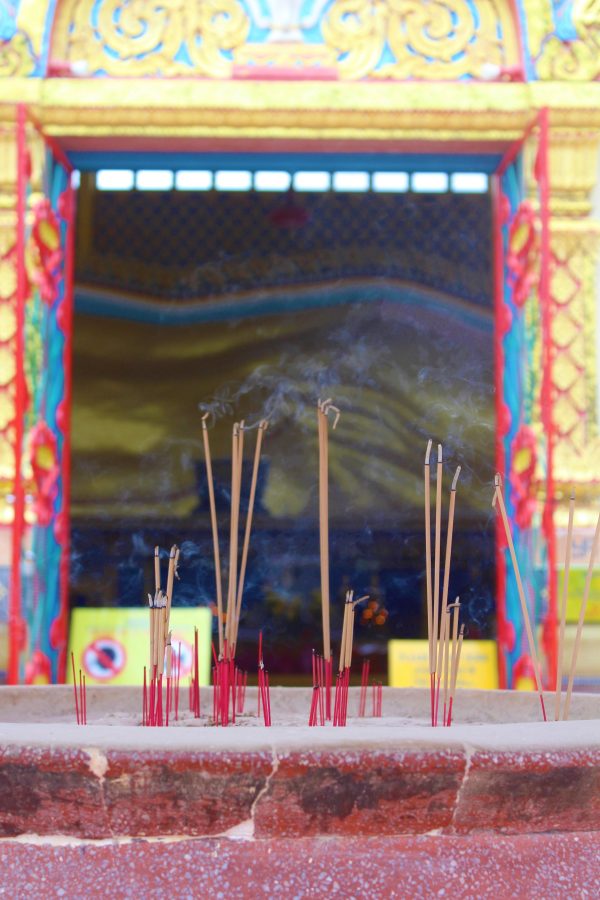
Having seen Buddha in different postures, it was a surprise what the reclining position denotes. Lying on his right side with his hand propped up between a pillow and a soothing smile on his face, it instantly adheres to relaxation. However, the reclining position is the final moment of the life of Buddha – known as mahaparinirvanasana – which happens to those who have reached enlightenment or nirvana during their lifetime.
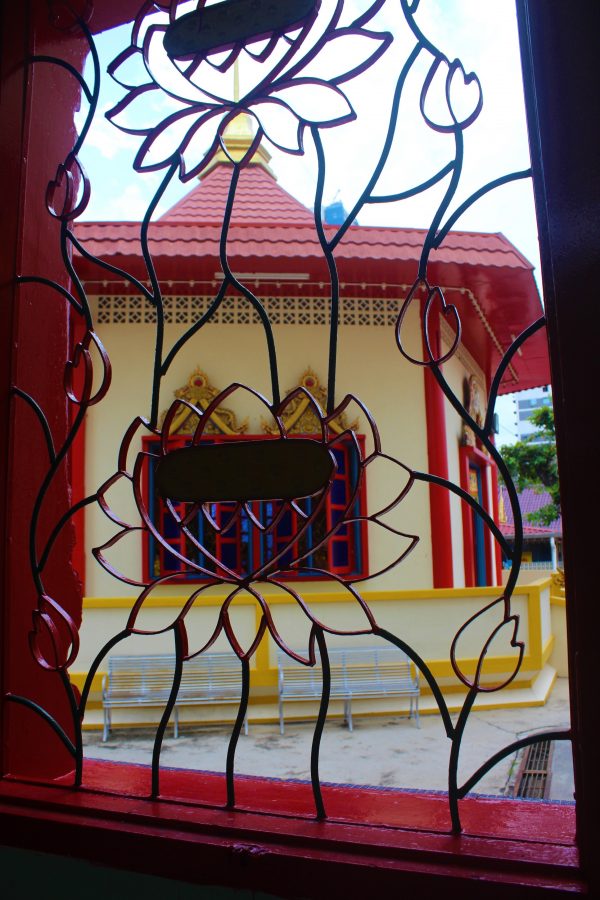
It is said that Buddha knew his death was approaching when he was in Kushinagar, India and asked his disciples to prepare a couch for him. In such a state, death isn’t grieved as much, and seen as a cycle of life. While taking in the magnificence of the statue, you can light a candle, read a book or listen to the hymns. Some people also buy alms for monks for their daily sustenance.
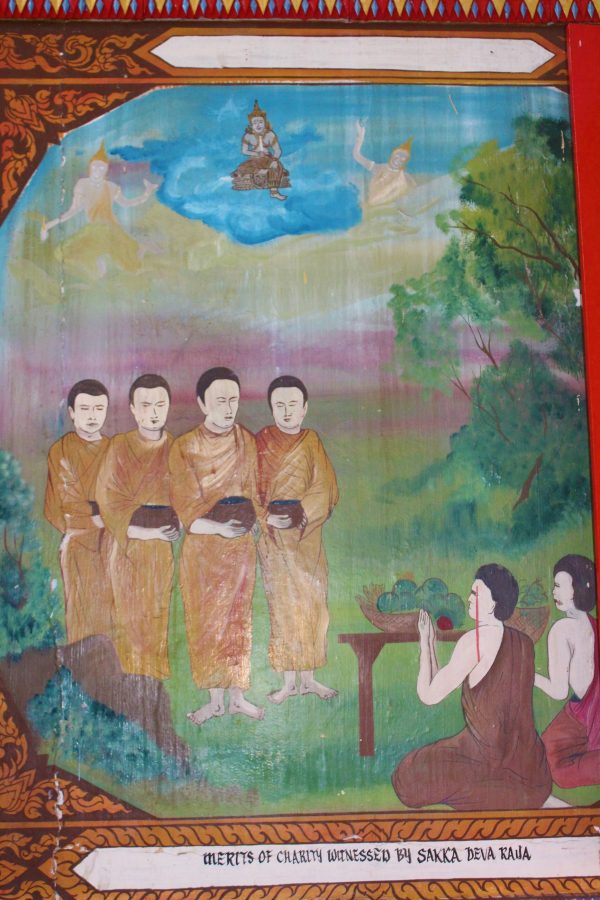
Many Buddhists believe is offering donations to the temple to gain merit for the afterlife, and the monks receive it with gratitude to continue fulfilling their vows.
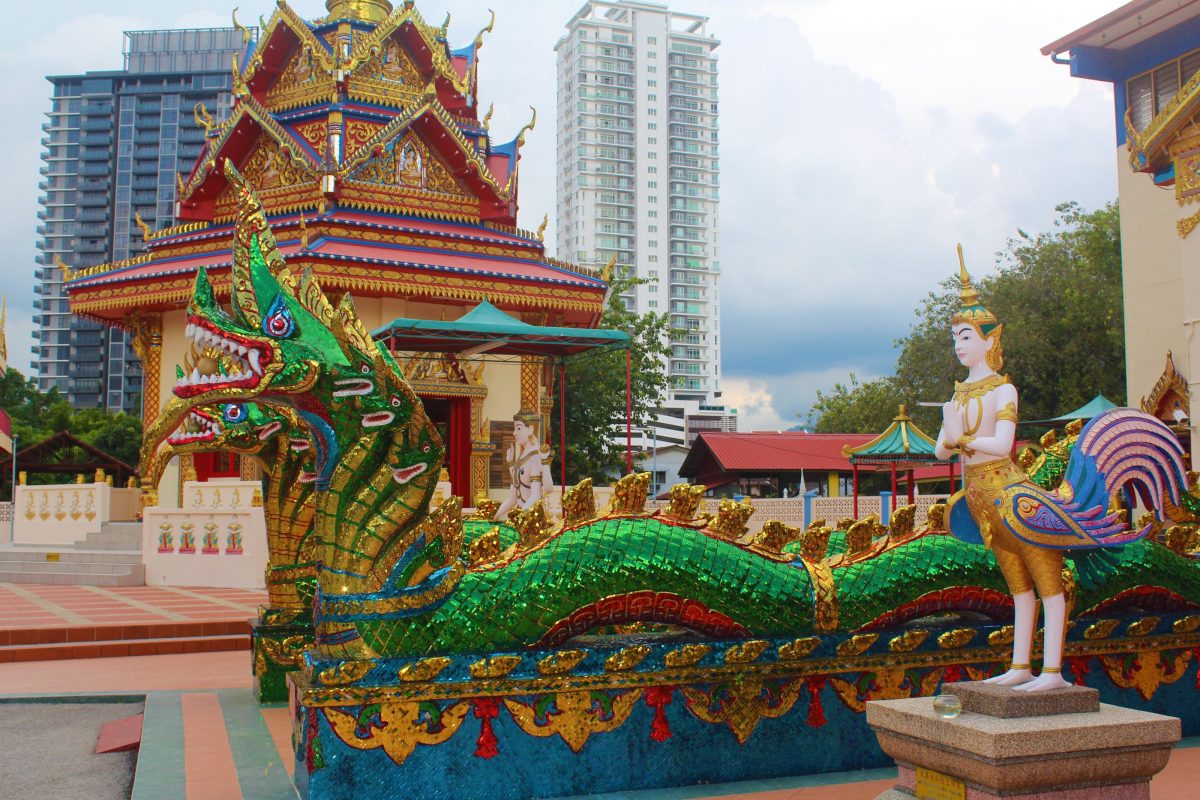
One poignantly beautiful part of the temple are the rows of urns under the Buddha containing the ashes of devotees. Some of them are centuries old, and it believed that these ancestral spirits remain to protect the temple. Apart from Buddhist devotees, respected remains of Thai descendants, Hindus, and Christians are also found here.
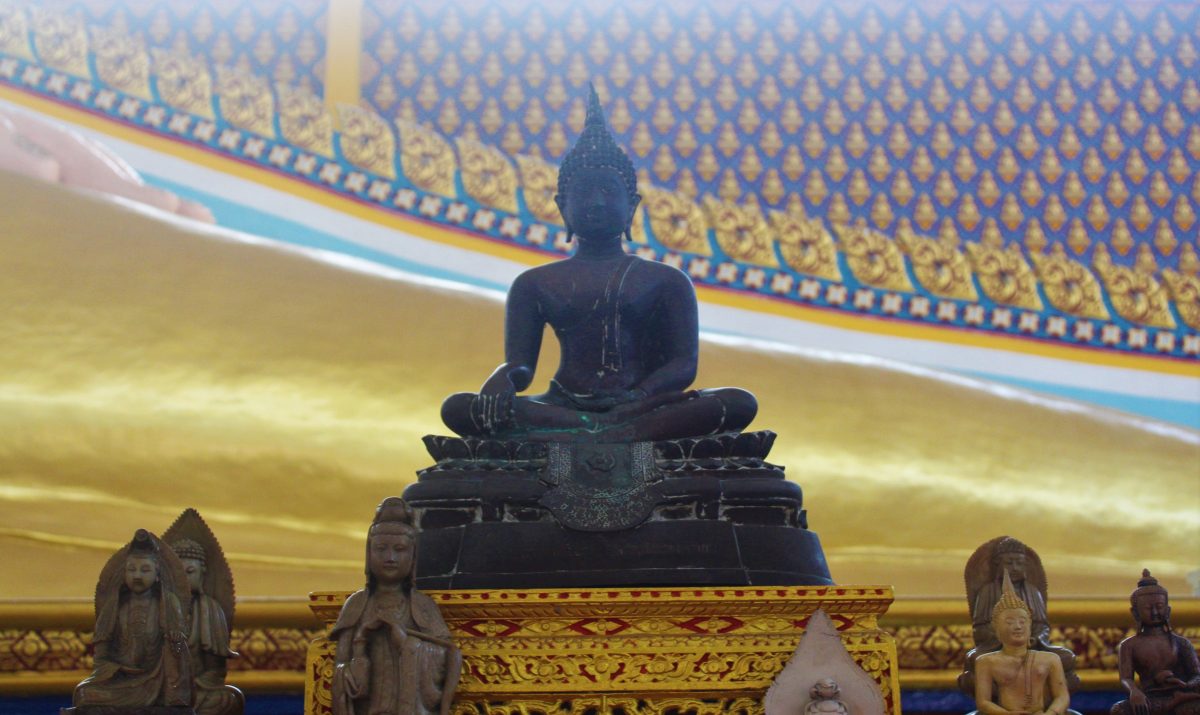
Above the urns are imposing murals of Buddha’s life and his journey and as colourful as they are, the underlying moral directives are surely thought-provoking or even quite macabre. Also, don’t forget to spend time admiring the shrines of The Four-Face Brahma and The Goddess of Mercy Guan-Yin as you witness the convergence of cultures through the ornaments, offerings, and smaller statues.
FUN PEEK INTO FORTUNES AND THE FUTURE
There are 19 Buddha statues surrounding the Reclining Buddha and each represents 12 zodiacs and 7 days. In accordance with Thai Buddhist belief, one should make special prayers and observance to individual birthdays and zodiac years.
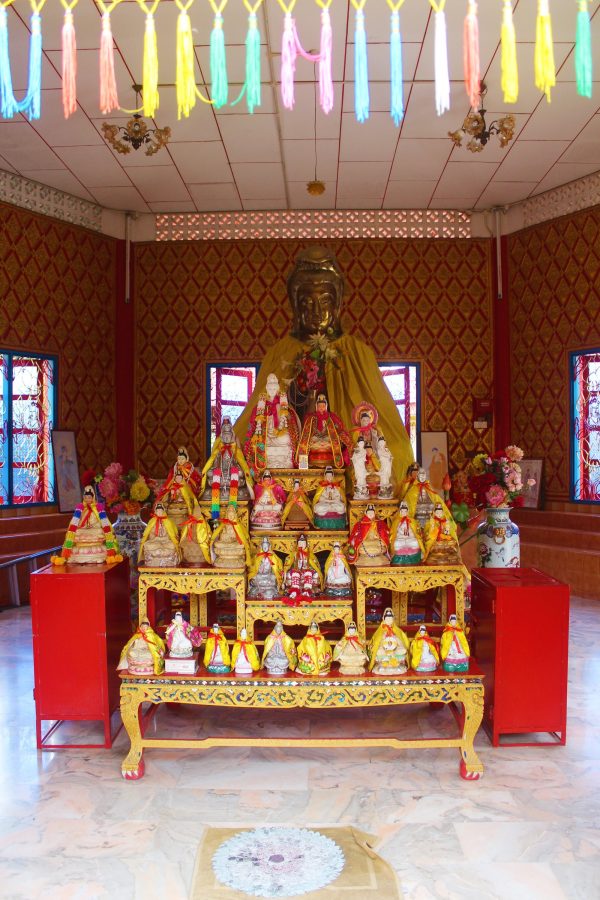
Young kids were excitedly rejoicing the horoscope messages as they dropped coins into the donation boxes in front of each statue. The thing that actually got me excited was a Wheel of Fortune machine. Upon inserting a 50-cent coin into the antique device, the light indicates a number which refers to a card from a deck below. Pick the card accordingly and receive a positive note or guidance to sharpen your mind or comfort your soul.
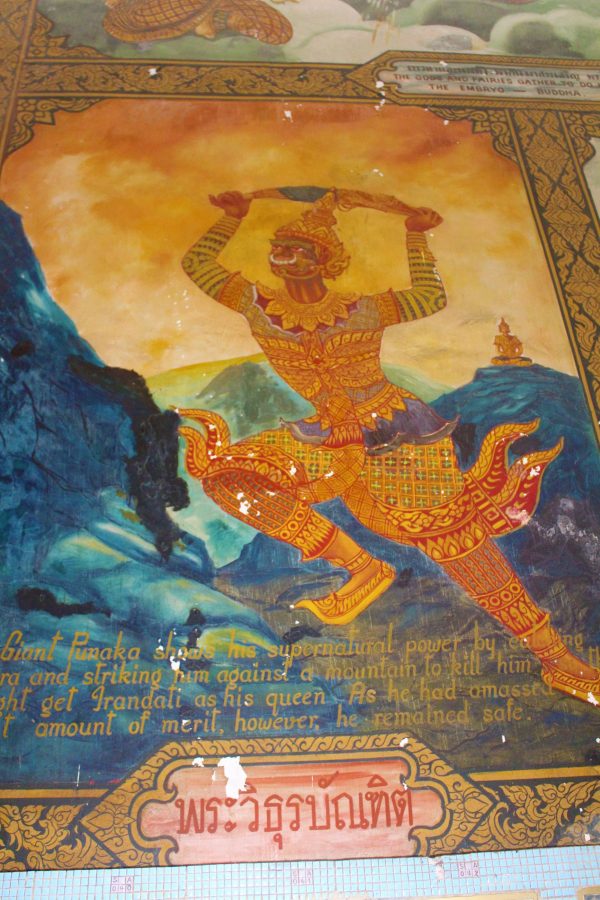
Next, is a gilded rack of Buddha statues placed by devotees from different countries. From Cambodia to Laos, time-worn to present-day, pristine marble and delicate stone carvings – each sculpture indicates the crossroads of the culture.
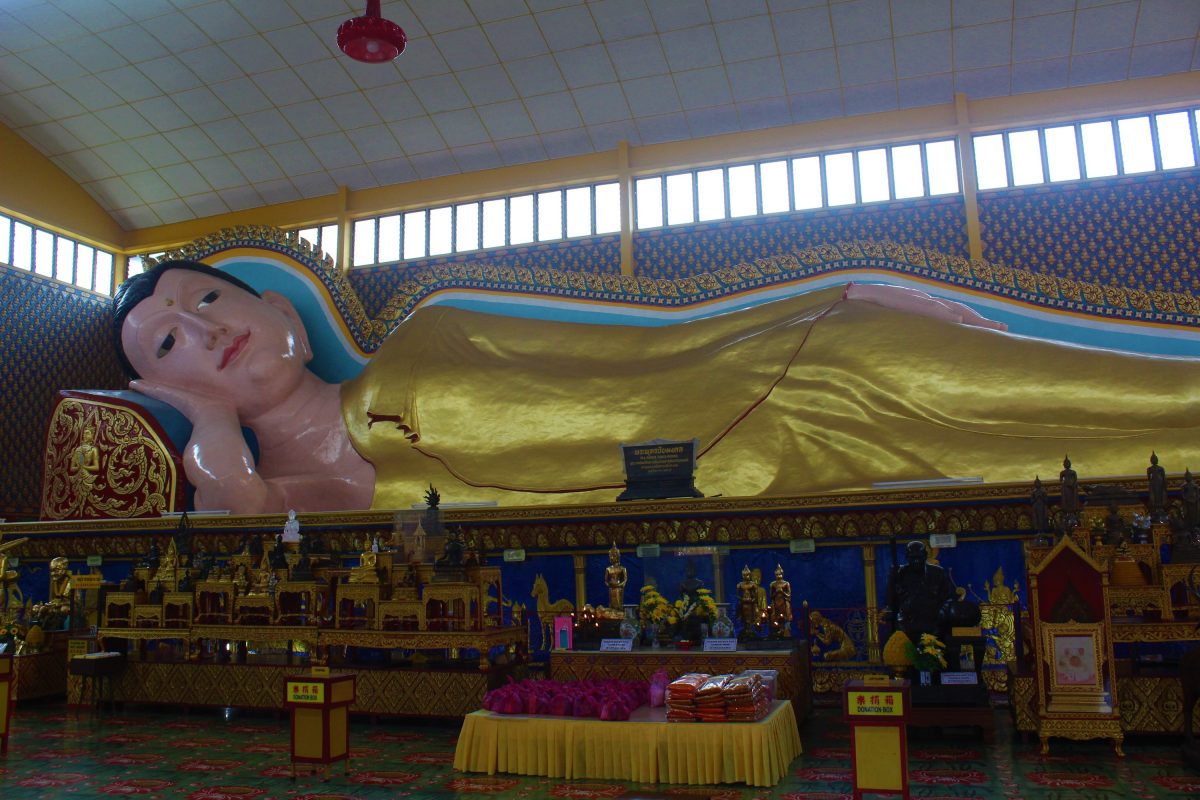
The presence of lotus flowers on tiles and window grills, and a wall of stylised Buddhas and gold carvings add to the modern Thai Buddhist architectural feat. Walking further behind the temple revealed a small Thai cemetery that many visitors tend to miss. For those who revere ancestral worship, the sight of the tombs invokes a sense of not just belonging, but cultural pride too.
TRACING THE FOOTSTEPS OF FORMER LEADERS
Wat Chayamangkalaram does not run out of historical influences too. Queen Victoria granted this piece of land to the local Siamese and Burmese community in 1795 when Penang was a colony of the British Empire. The temple was built in 1845 and initially named Wat Pulau Tikus, before taking the present name in 1948. Despite the Reclining Buddha getting the most attention today, the main prayer hall or Ubosoth and a nearby stupa were the first to be built between 1795 to 1845.
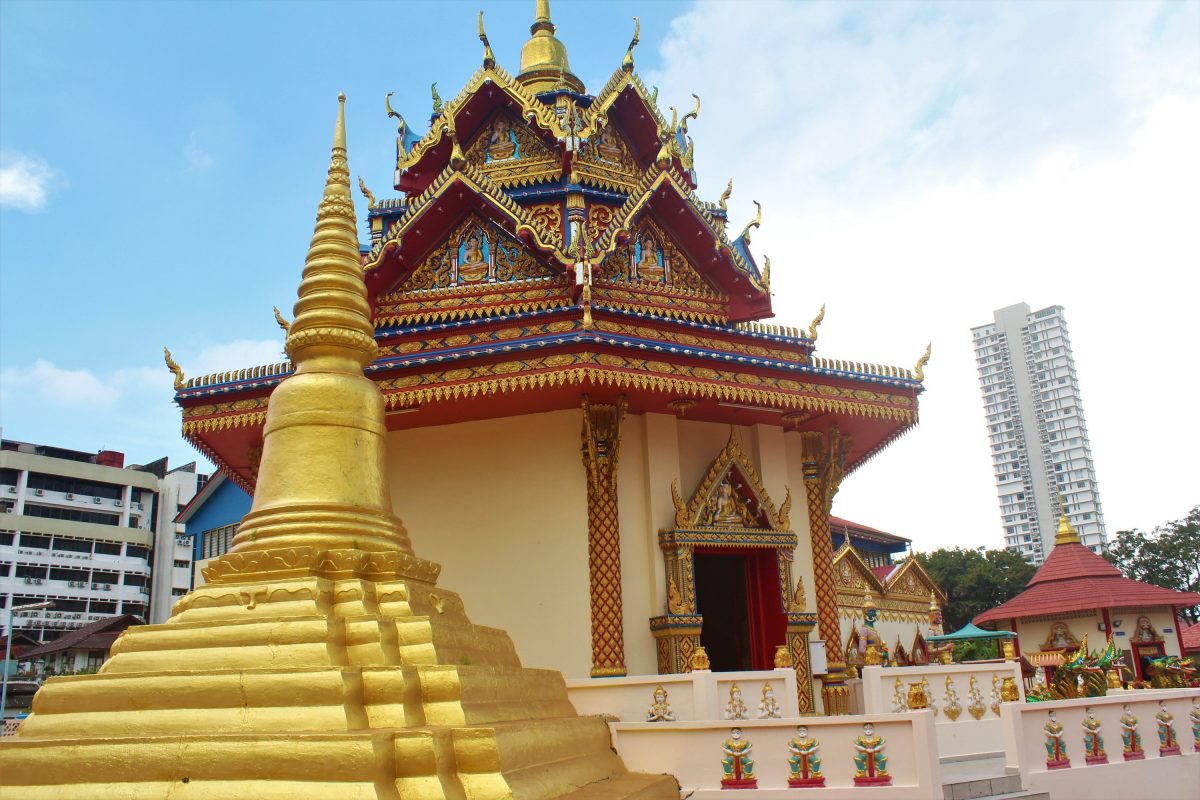
A Buddha resides within the Sino-Thai style hall and the stupa is the only structure to remain in its original shape and form. The dedication to craftsmanship – symmetrical shapes, radiant colours, and leaf-like borders – makes the roof the most eye-catching feature. Prince Damrong Rajanubhab, one of Thailand’s most influential intellectuals took political refuge in Penang from 1933 to 1942. He mentioned, “Wat Pulau Tikus is considered the Thai Buddhist Temple with the longest history on Penang Island.”
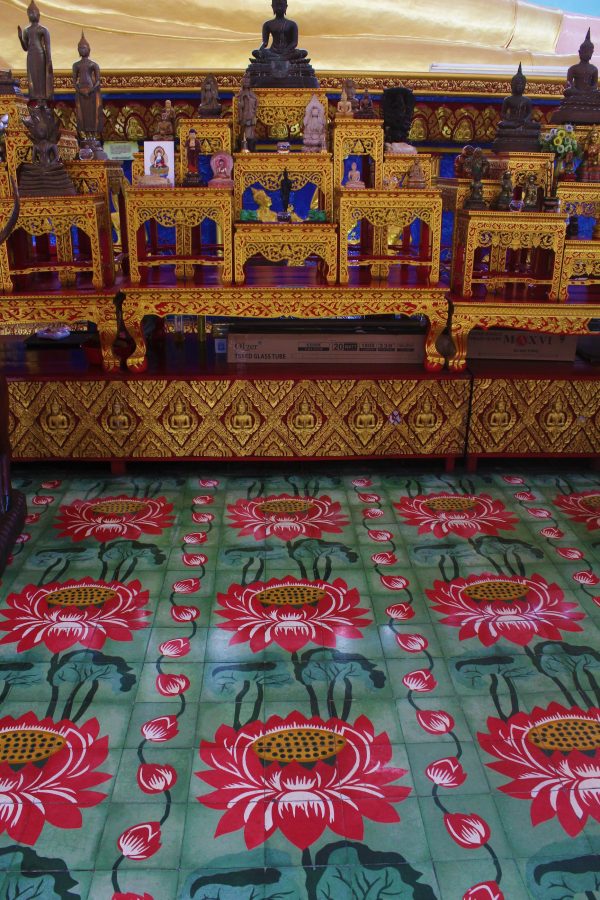
The most memorable moment was the subsequent grand opening of the temple. On 5 June 1970, the Prime Minister of Malaysia, Tengku Abdul Rahman and the Prime Minister of Thailand, Field Marshal Thanom Kittikachorn presided over the event.
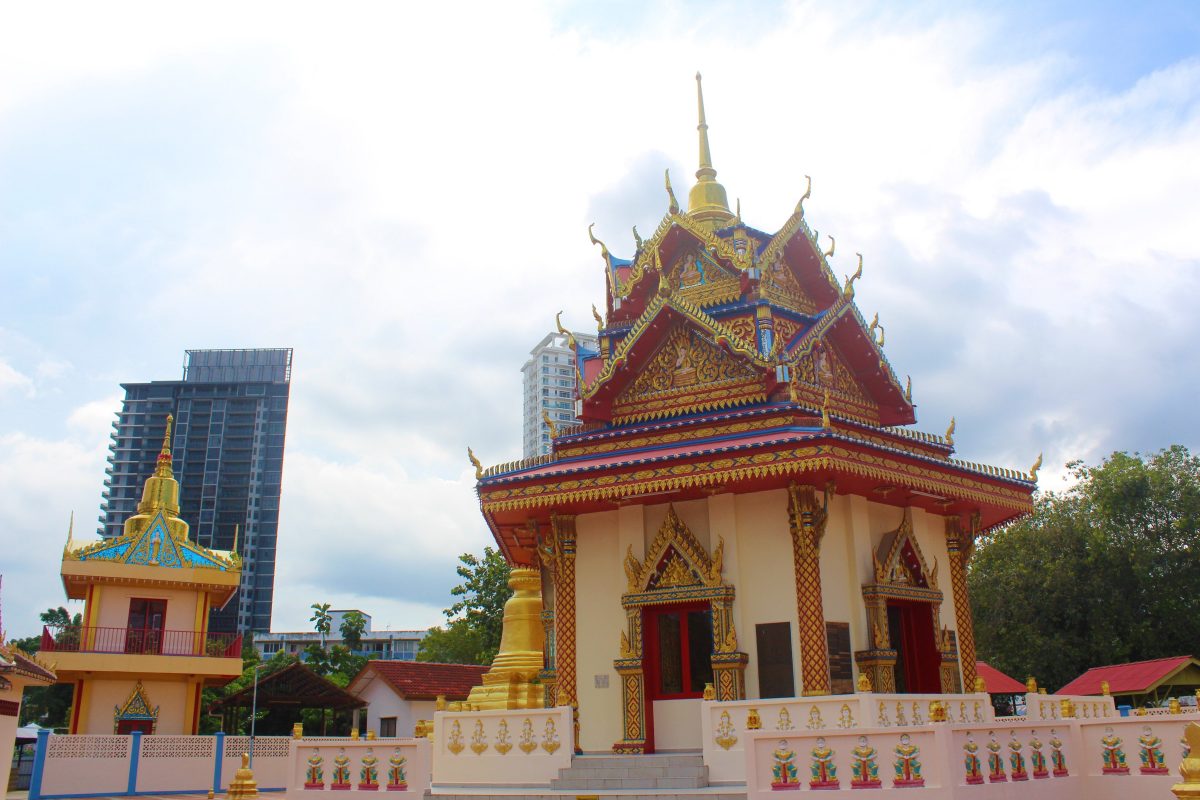
The temple has also welcomed the Prime Minister of India, Jawaharlal Nehru and Consul-General of Japan Tetsuro Kai. History buffs delight over the chronological photographic mementos found here.
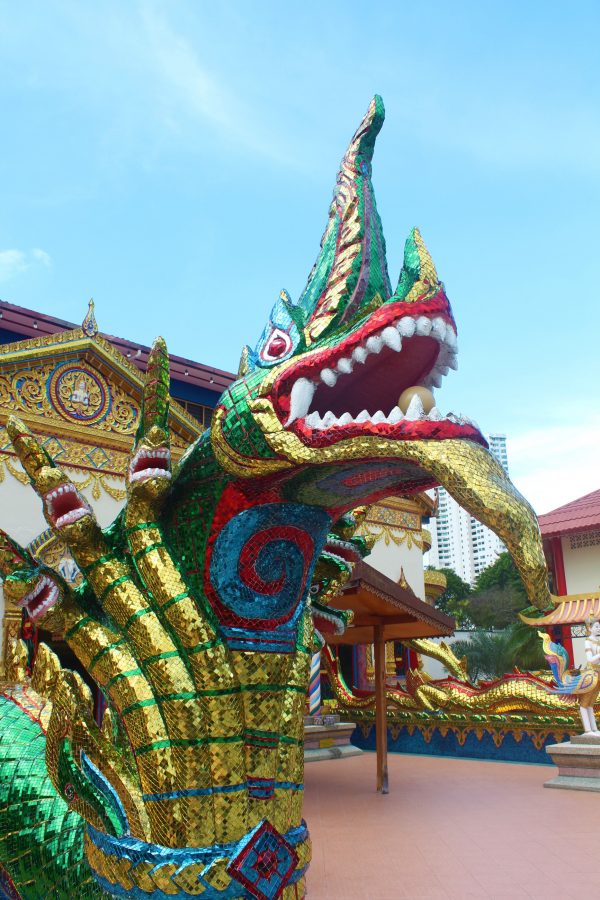
Penang’s food is bound to lure everyone and a legendary monk is no exception. Phorthan Kuat, a Theravada Monk established the Buddhist temple in 1845 and legend has it that he was very fond of Penang laksa. Until today, devotees bring a bowl of spicy-sour noodles to his shrine. They leave the local delicacy for a while and later bring it home as a form of blessing.
BEDROCK OF ANNUAL FESTIVALS
Time your visit right to witness festivals that have endured for centuries. The first day of every year is regarded as Tak Bat (alms offerings). Commence the new calendar year as an alms-giver of food and drinks and receive blessings from the monks. Do note that the traditional Thai New Year actually falls in April (spring) and is known as Songkran. This gleeful festival uses water as an expression of blessings, embracing goodwill, love, compassion and thankfulness.
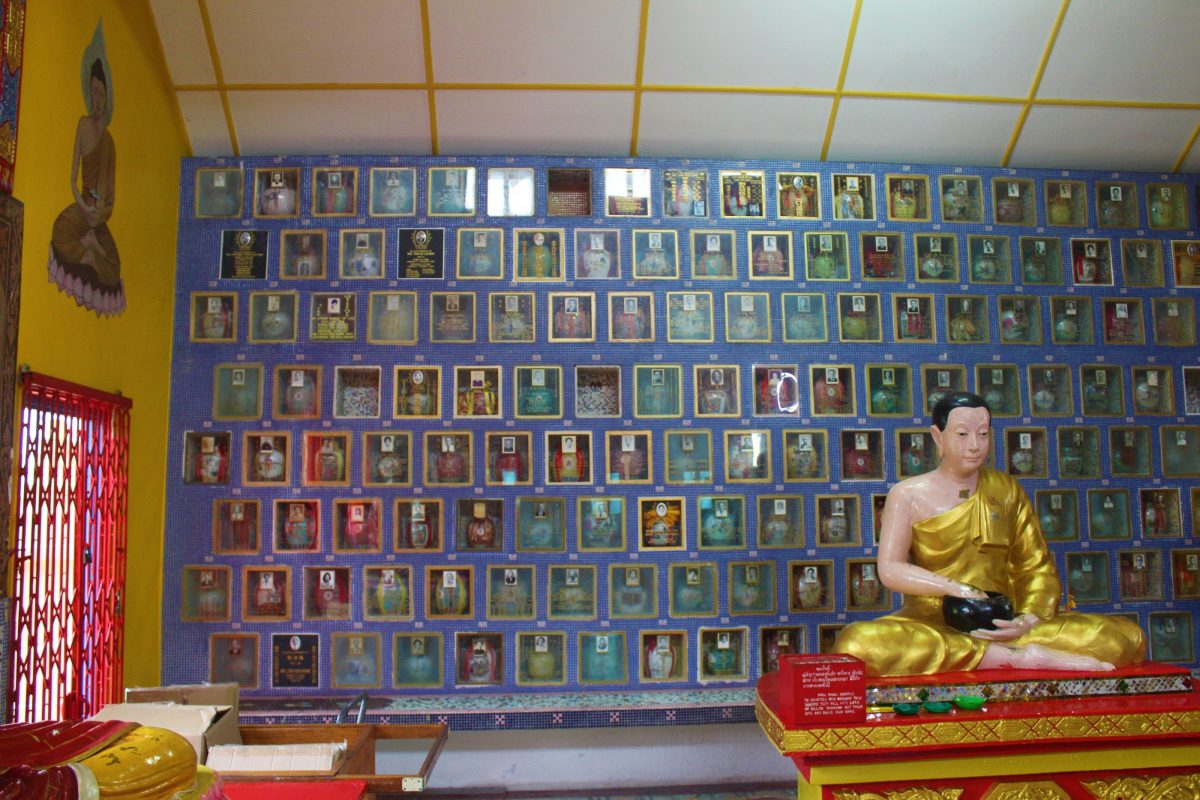
A month later, on the first full moon of Vesakha, comes Wesak Day: a day that commemorates the birth, enlightenment, and death of Siddhartha Gautama. Since Wat Chayamangkalaram sits right opposite Dhammikarama Burmese Temple, the entire street comes alive for these cultural and festive celebrations. More self-effacing and silent is Kathina, a celebration which originated 2500 years ago. For this festival that begins at the end of Vassa — the three-month rainy reason retreat, watch Buddhist families take joy in offering cotton robes to bhikkus (monks).
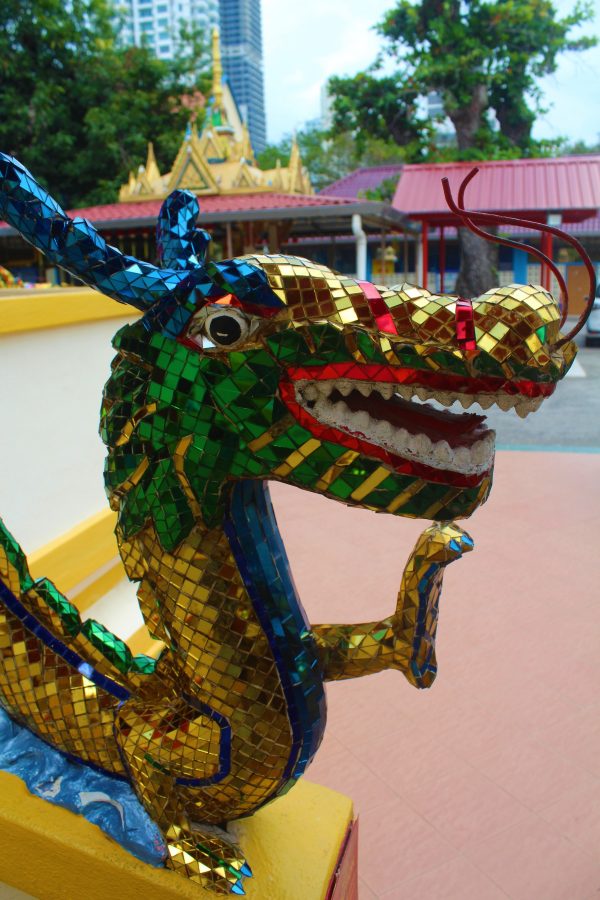
Beauty is straightforward, but if you don’t mind delayed gratification, you find different aspects that attribute to the temple’s fine worth. These details are easy to miss, especially in the height of getting the best photos. There is no doubt this temple finds its way into travel guidebooks, but its tales and history provide a better perspective of a culture when experienced in person.

